CIREBON, INDONESIA - MARCH 02: Workers prepare snake skins on March 2, 2014 in the village of Kertasura, Cirebon, Indonesia. At slaughter house snake skins measuring in the hundreds of metres, are sold to bag factories in the West and Central Java provinces on a monthly basis. From snake skin was manufactured into bags, shoes, wallets and belts. The price of a bag made from snake skin costs between 150,000 rupiah ($15 USD) and 300,000 rupiah ($30 USD), depending on its size. When snake skins reach Western fashion houses their price can increase dramatically and sell for up to $4,000 USD. (Photo by Nurcholis Anhari Lubis/Getty Images)
The brutal process behind luxury fashion accessories has been captured by these haunting images of a snake slaughterhouse in Indonesia.

5% Discount Coupon: Unknown Tentsile
Snakeskin may be coveted by the world’s fashion elite, but the truth behind designer snakeskin clothing will turn the stomach of even the most staunch fashionista.
Shocking images from Getty have show how snakes are killed by the thousands using exceptionally cruel methods.
First the snake is stunned with a blow to the back of the head before a hose is shoved down its throat.
It is then filled with water, swelling up like a balloon, before a leather cord is tied around its neck to hold the water in, and left for ten minutes.
The workers then impale the snake’s head on a metal hoot and slice off the now-loosened skin.
The skin is then placed in a hot oven to dry out, where it naturally curls.
The rest of the snake is tossed onto a pile of other, similarly-skinned animals where it is left to die. It can take from 10 minutes to a coouple of days for snakes to die, the animal rights group Peta has said.
The price of a snakeskin bag is between 150,000 and 300,000 rupiah (£10-20) depending on its size, but when it reaches Western fashion houses the price can increase up to £2400.

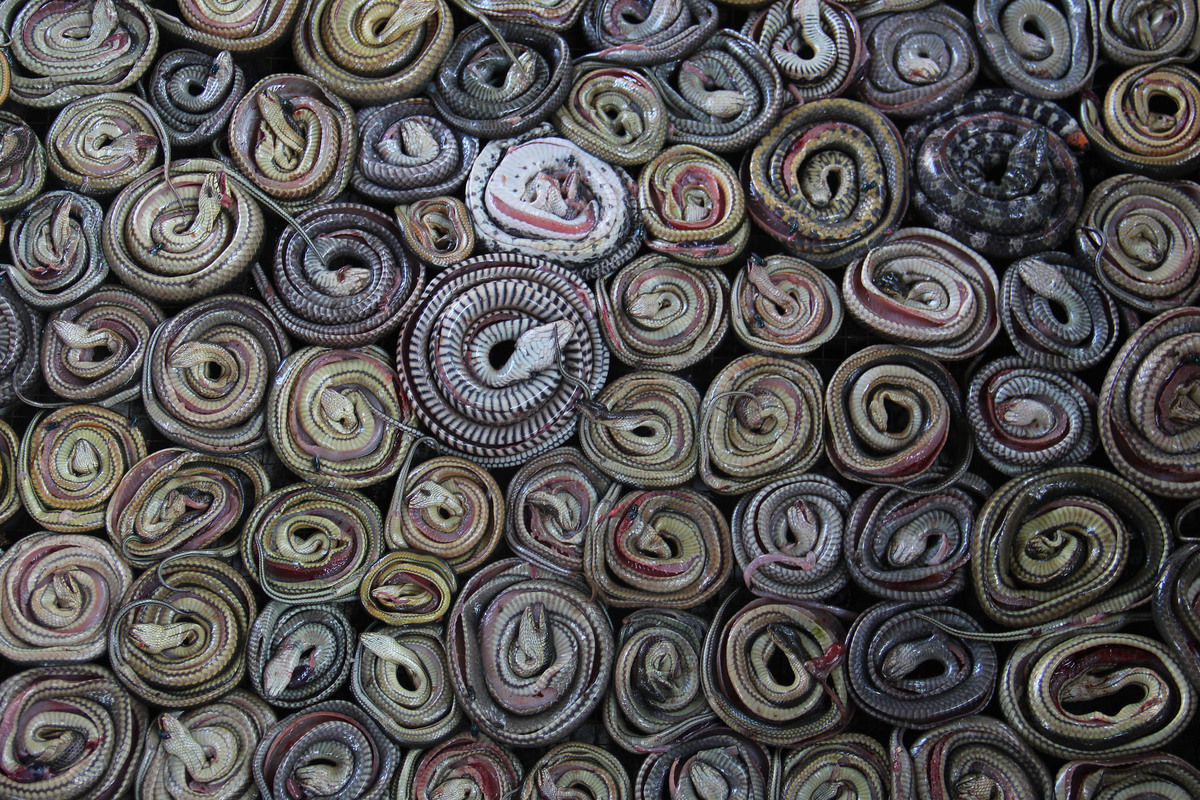
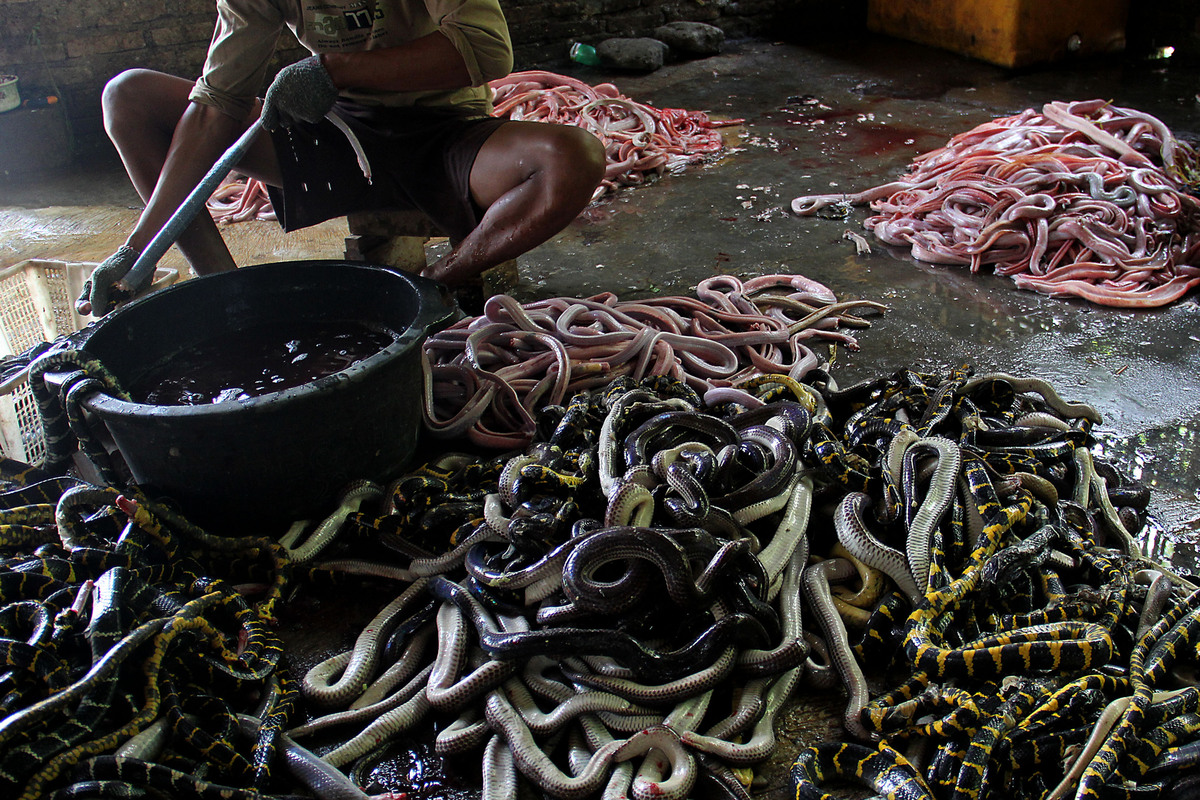
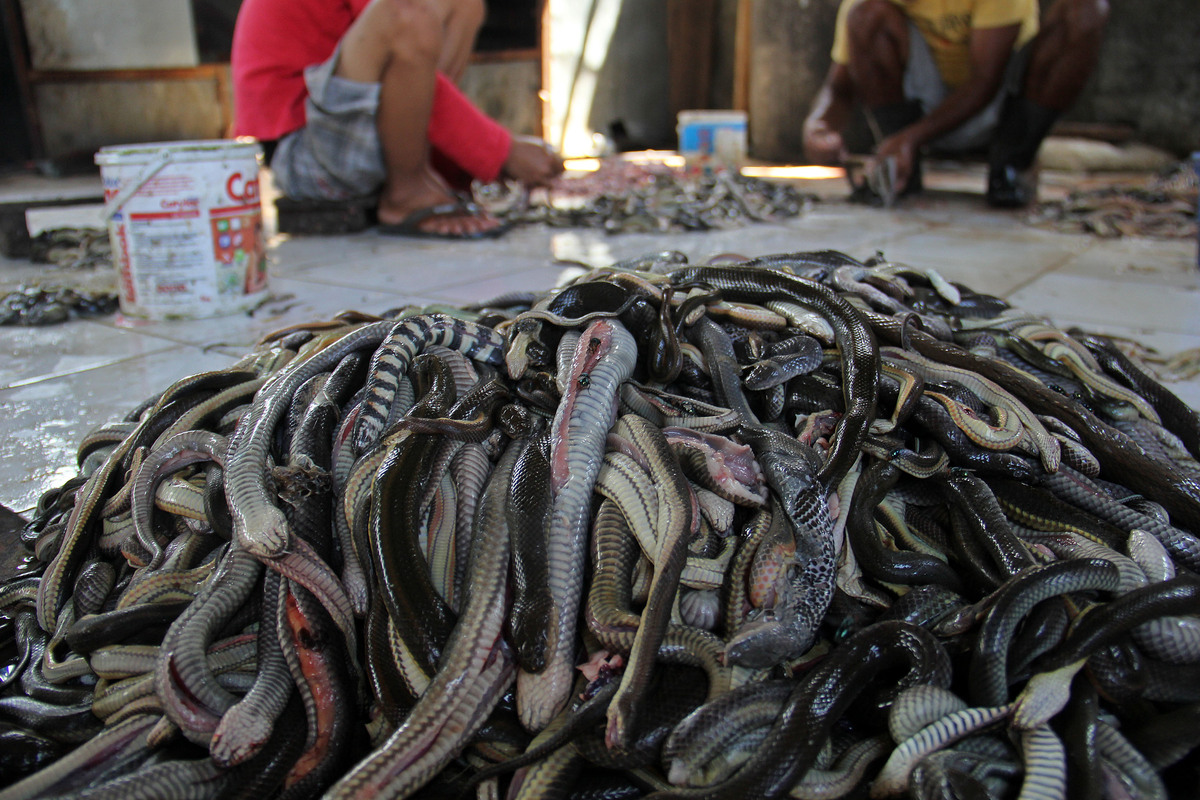
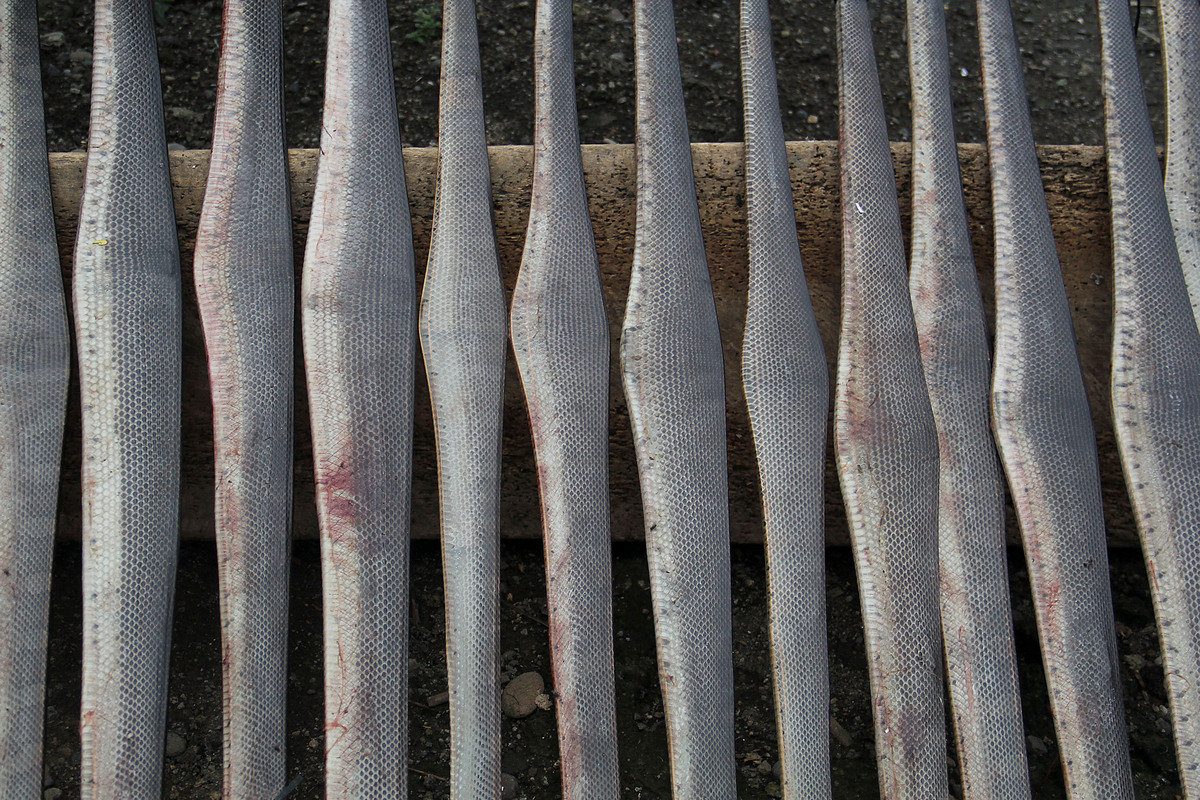

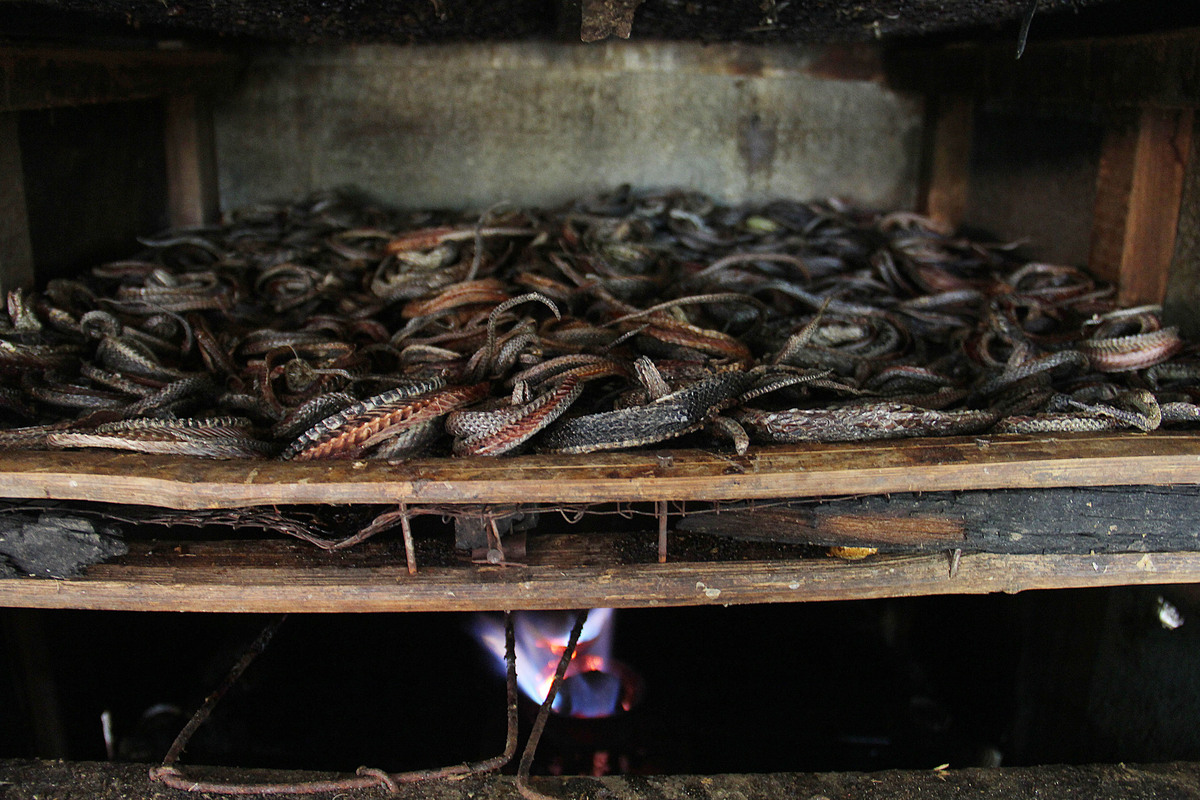
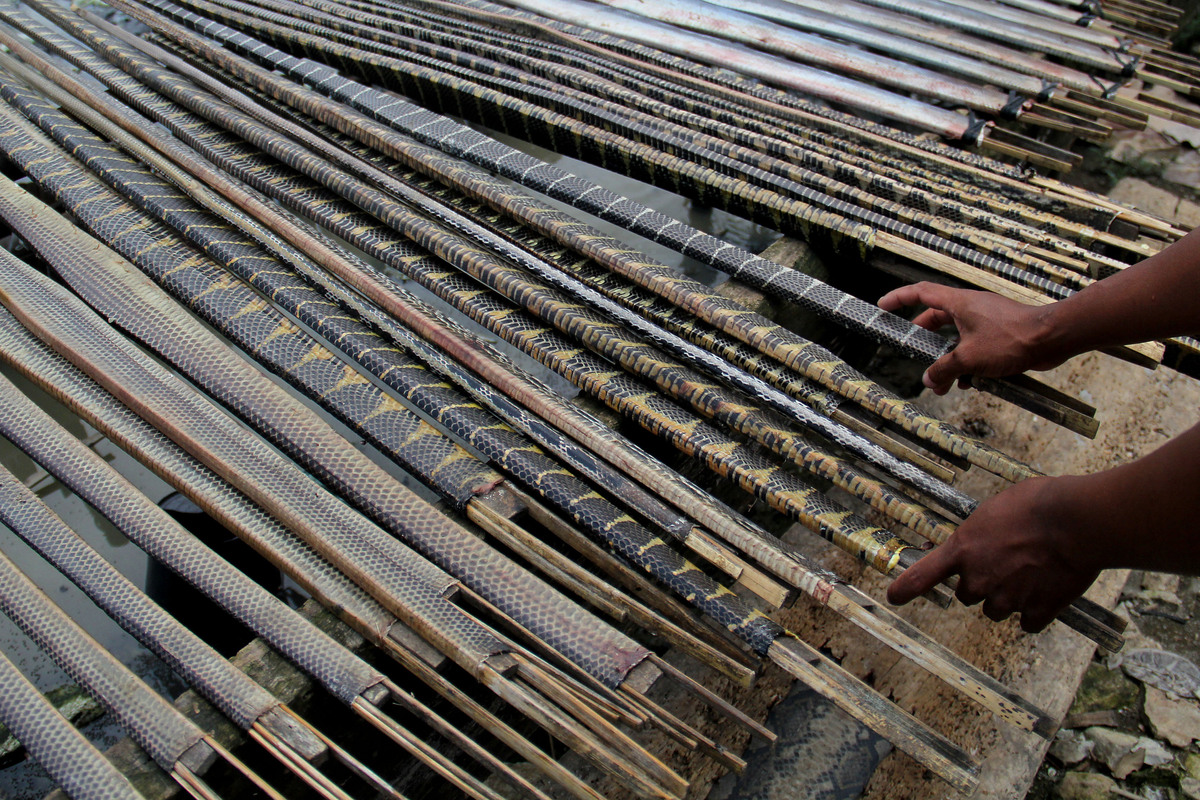
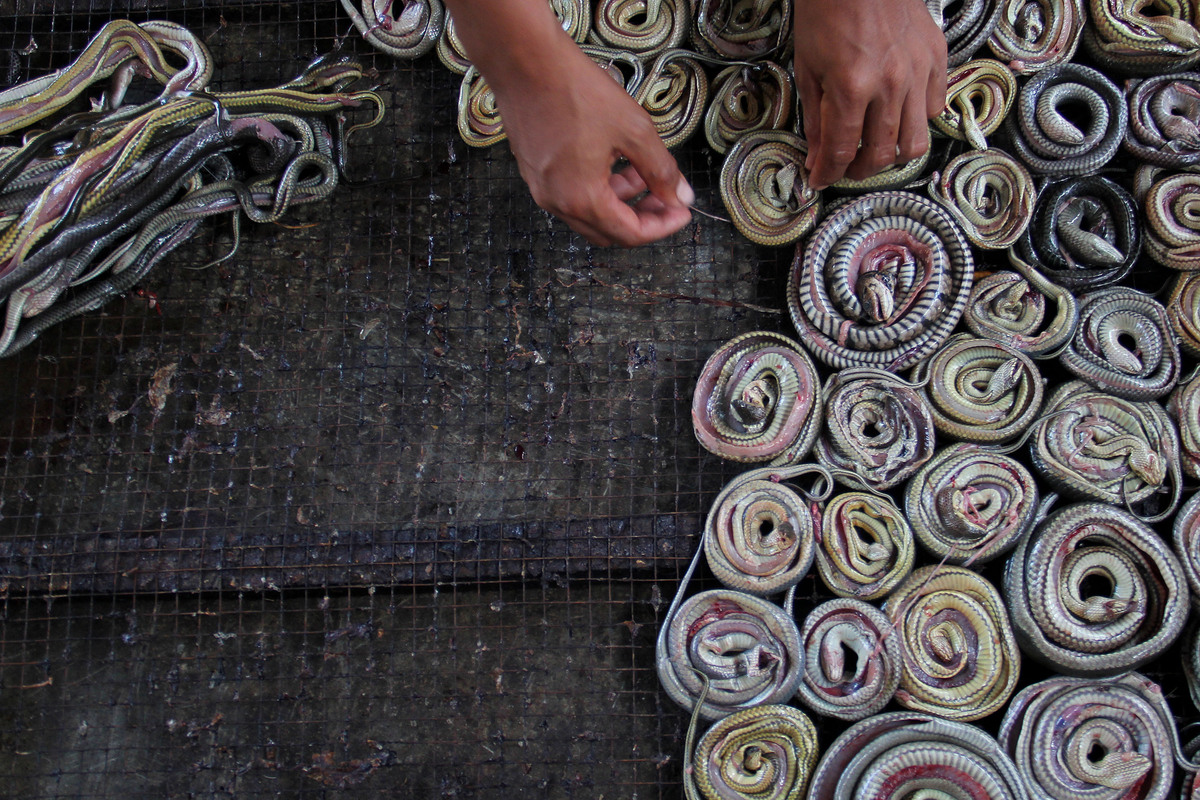
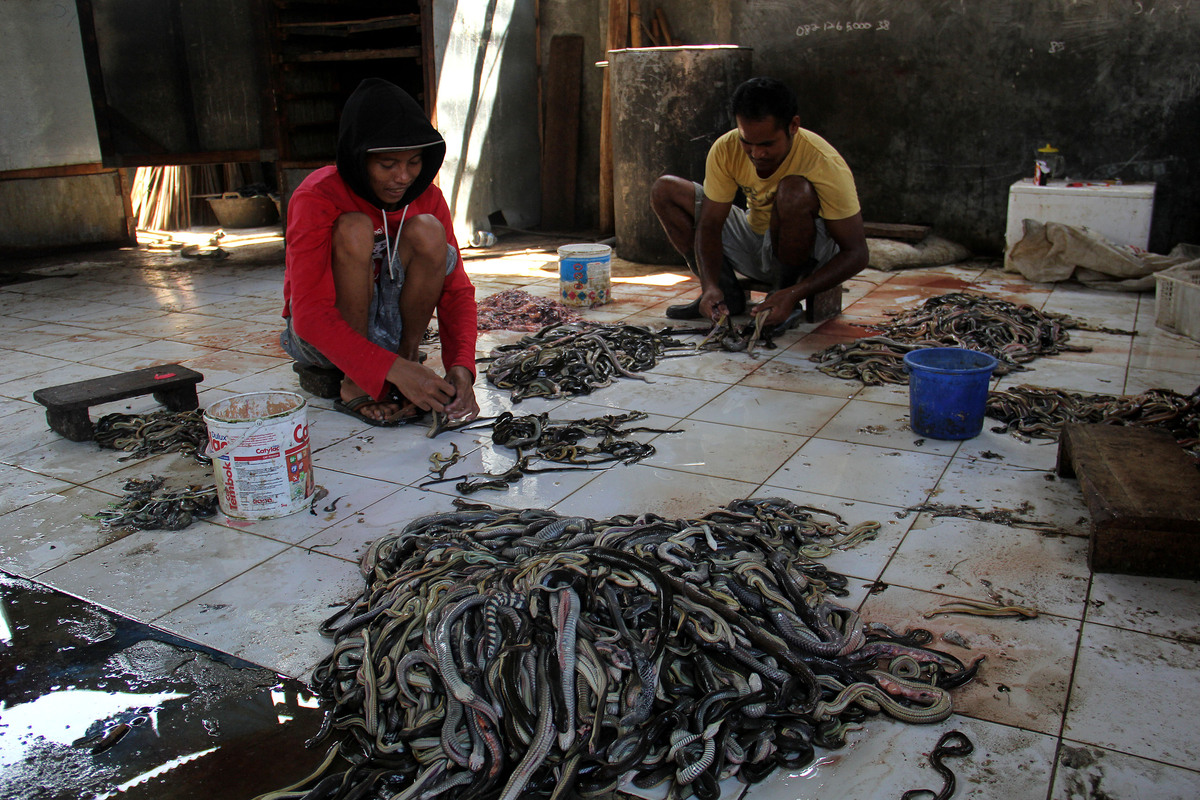
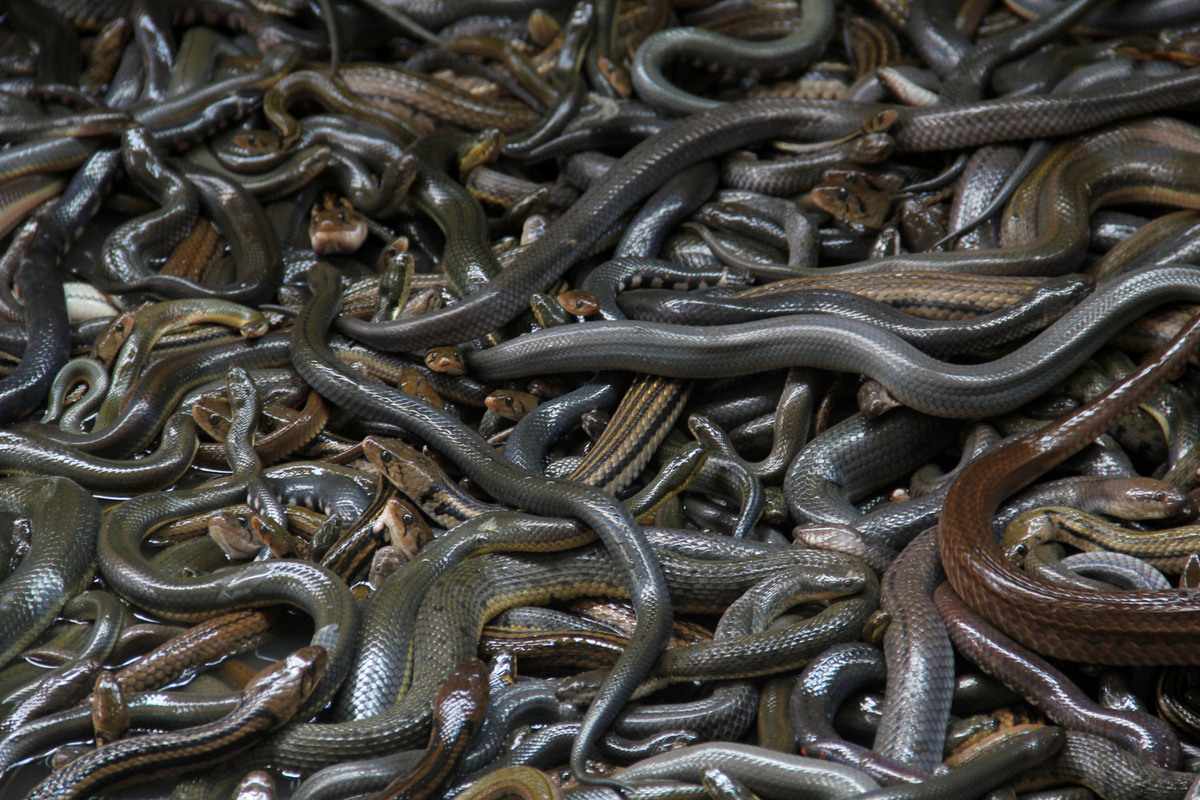
Facebook Comments